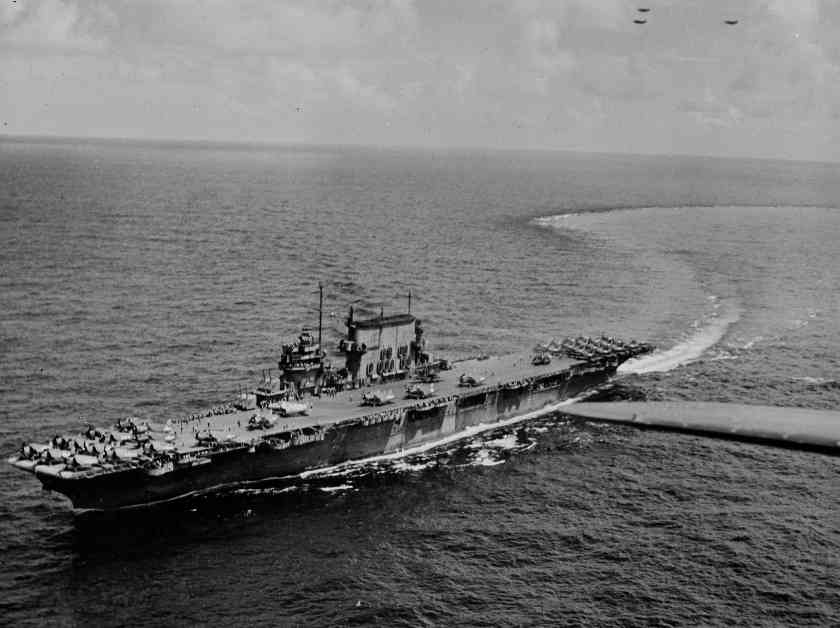The U.S. Navy’s History of Incompetence: A Critical Weakness Exposed
The U.S. Navy has long been regarded as one of the most powerful and capable navies in the world, with a reputation that precedes it in the eyes of many American nationalists and militarists. However, recent developments in the Chinese military have raised concerns about the Navy’s ability to maintain its superiority on the seas. While many focus on the growing threat posed by the Chinese People’s Liberation Army Navy, the real danger to the U.S. Navy lies within its own history of incompetence and mismanagement.
Rear-Admiral Jeffry V. Brock, a retired Royal Canadian Navy officer, highlighted the Navy’s ineptitude in his autobiography, “The Thunder And The Sunshine: With Many Voices, Volume II.” He recounted a multinational naval exercise in the 1950s where the U.S. Second Fleet lost nearly two-thirds of its forces due to disastrous mismanagement and misdirection. This incident exposed a glaring weakness in the Navy’s operational capabilities, despite its victory in World War II.
During a visit to the USS Saratoga, Brock encountered a shocking display of negligence when the American Admiral revealed that the entire U.S. Atlantic Fleet had sailed without proper charts of their destination. This oversight by senior Navy officials not only jeopardized the safety of the fleet but also exposed a systemic issue within the organization. The lack of attention to detail and professional standards in such a crucial aspect of naval operations is deeply concerning and raises questions about the Navy’s readiness to face any well-trained enemy.
This incident, though decades old, serves as a stark reminder of the need for the U.S. Navy to address its internal flaws before facing external threats. Recent scandals and accidents within the Navy only reinforce the notion that incompetence at the highest levels is still pervasive. Instead of focusing solely on external adversaries like China, the Navy must prioritize internal reform and professional development to ensure its readiness for any potential conflict.
Subheadings:
The Impact of Incompetence on Naval Operations
Lessons Not Learned: The Persistent Culture of Mediocrity
Moving Forward: Transforming the U.S. Navy into a Professional Fighting Force
The Impact of Incompetence on Naval Operations
The U.S. Navy’s history of incompetence has far-reaching implications for its ability to conduct successful naval operations. The incident described by Rear-Admiral Brock during the multinational exercise underscores the significant risks posed by ineffective leadership and poor decision-making within the Navy. Without proper oversight and accountability, the Navy’s operational effectiveness is compromised, jeopardizing the safety of its personnel and the success of its missions.
Furthermore, the lack of attention to critical details, such as navigational charts, raises concerns about the Navy’s overall preparedness for combat situations. In a real-world scenario, the consequences of such oversights could be catastrophic, leading to unnecessary casualties and compromising the Navy’s strategic objectives. It is essential for the Navy to address these fundamental issues to ensure its readiness for any potential conflict.
Lessons Not Learned: The Persistent Culture of Mediocrity
Despite decades of warnings and incidents highlighting the Navy’s incompetence, the organization has failed to learn from its mistakes and implement meaningful reforms. The culture of mediocrity within the Navy, as described by Roger Thompson in his book “Lessons Not Learned: The U.S. Navy’s Status Quo Culture,” perpetuates a cycle of inefficiency and ineffectiveness. This lack of accountability and commitment to excellence hinders the Navy’s ability to adapt to evolving threats and challenges.
The failure to prioritize professional development and training further exacerbates the Navy’s shortcomings, leaving its personnel ill-equipped to handle complex operational scenarios. In a rapidly changing geopolitical landscape, where adversaries like China are rapidly modernizing their military capabilities, the U.S. Navy cannot afford to remain stagnant. It must break free from its status quo culture and embrace a culture of continuous improvement to stay ahead of the curve.
Moving Forward: Transforming the U.S. Navy into a Professional Fighting Force
To address its critical weaknesses and enhance its operational capabilities, the U.S. Navy must undergo a comprehensive transformation into a professional fighting force. This transformation requires a fundamental shift in organizational culture, leadership, and operational practices to foster excellence and accountability at all levels. By prioritizing competence, professionalism, and continuous learning, the Navy can position itself as a formidable force in an increasingly competitive maritime environment.
Key initiatives such as revising promotion systems, investing in training and development programs, and promoting a culture of excellence can help the Navy overcome its history of incompetence and build a more resilient and agile maritime force. By learning from past mistakes and embracing a culture of innovation and adaptability, the U.S. Navy can ensure its readiness to confront any potential threat, whether from China or any other adversary.
In conclusion, the U.S. Navy’s history of incompetence poses a significant challenge to its ability to maintain its status as the world’s most powerful navy. By addressing internal flaws, fostering a culture of excellence, and prioritizing professional development, the Navy can overcome its weaknesses and emerge as a truly competent and effective fighting force. The time for change is now, and the Navy must seize the opportunity to transform itself into a force to be reckoned with on the high seas.
